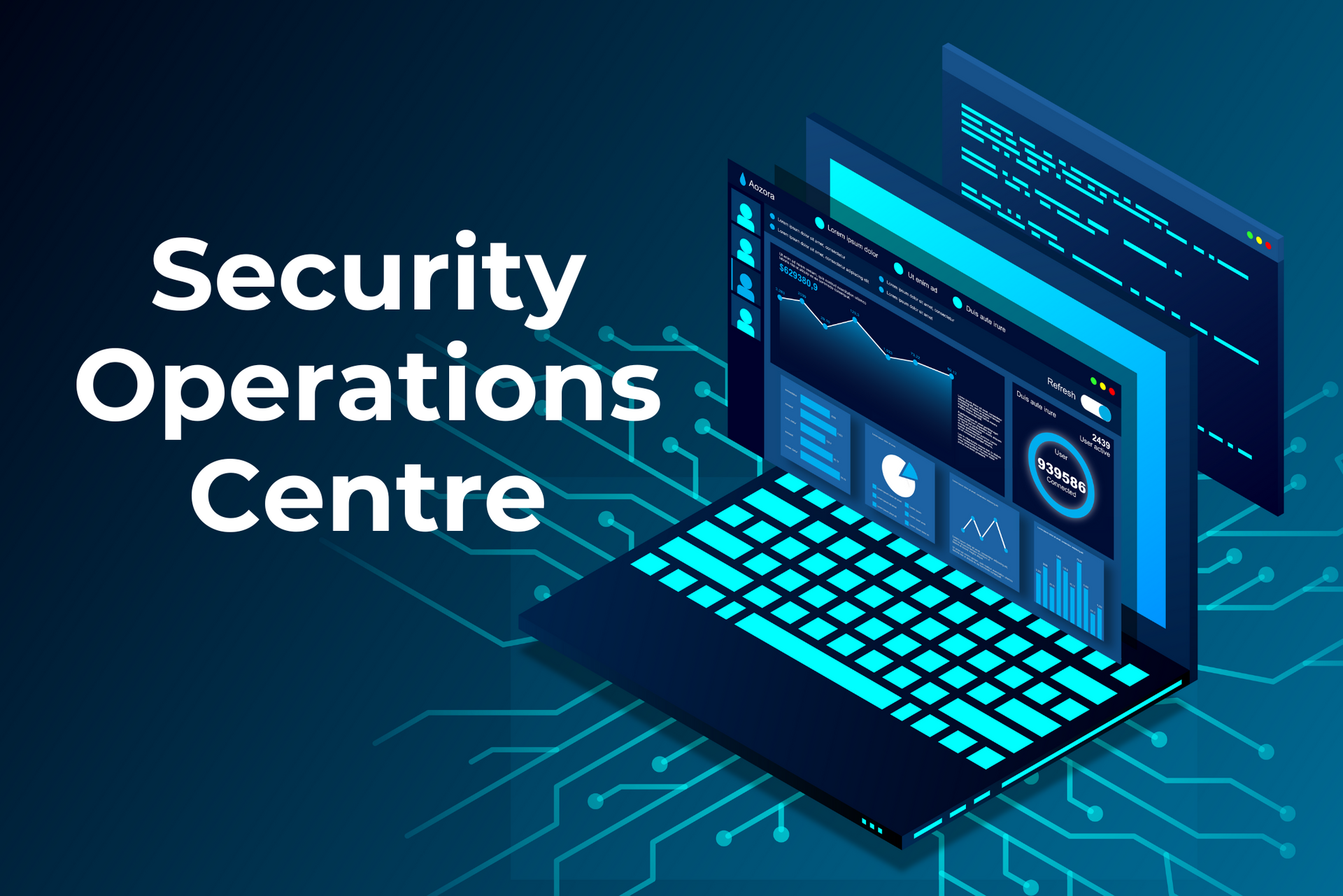Experiencing a Breach? [email protected] | Safetech Blog
The Rising Investment in Threat Intelligence: How the Finance Sector Strengthens Their Cybersecurity

Exploring the Surge in Cybersecurity Funding within the Financial Industry
The financial sector is witnessing a significant uptick in investment towards enhancing cybersecurity measures. This surge is primarily driven by the escalating threats of cyberattacks, which have become more sophisticated and frequent.
Financial institutions are now prioritising the threat intelligence of their digital infrastructures to safeguard their sensitive data. The emphasis on cybersecurity is not just about risk mitigation; it's also about gaining a competitive edge in an industry where reliability and trust are paramount.
Financial institutions were the second most impacted sector based on the number of reported data breaches last year. Institutions in the U.S., Argentina, Brazil, and China were most affected. SentinelOne. (n.d.). What is a Data Breach? SentinelOne. Retrieved from https://www.sentinelone.com/cybersecurity-101/what-is-a-data-breach/
Investments in threat intelligence are being channelled through various avenues within the financial sector. Key areas of focus include:
- Advanced threat detection systems that leverage artificial intelligence and machine learning algorithms to identify potential threats before they materialise.
- Enhanced encryption techniques to secure data transmission and storage, ensuring that customer information remains confidential and tamper-proof.
- Employee training programs (Phishing training and awareness) are aimed at raising awareness about cybersecurity best practices and reducing the risk of human error, which is often a weak link in security chains.

Why are so many financial investment firms investing in threat intelligence?
The rationale behind these investments is clear: the cost of preventing cyberattacks is significantly lower than the potential financial and reputational damage of a successful breach. Financial institutions are thus adopting a proactive approach to cybersecurity, recognising that in the digital age, a robust security posture is not just a regulatory requirement but a critical business imperative.
By investing in advanced threat intelligence and cybersecurity measures, the finance sector is not only protecting itself but also reinforcing the overall stability and integrity of the global financial system.
Key Drivers Behind Increased Threat Intelligence Spending
With the digital transformation of financial services, the sector has become a prime target for cybercriminals, leading to a significant uptick in investment in threat intelligence. High-profile breaches in recent years have underscored the catastrophic consequences of inadequate cybersecurity measures. For instance, the Equifax breach of 2017, which exposed the personal information of 147 million people, highlighted the dire need for robust cybersecurity frameworks. This incident, among others, has propelled financial institutions to reevaluate and strengthen their cybersecurity postures, with a keen focus on advanced threat intelligence solutions.
Regulatory pressures also play a crucial role in driving the finance sector's investment in threat intelligence. Global financial regulatory bodies, such as the Financial Conduct Authority (FCA) in the UK and the Securities and Exchange Commission (SEC) in the US, have tightened cybersecurity guidelines and reporting requirements. These regulations mandate financial institutions to adopt proactive measures in identifying, reporting, and mitigating cyber threats. A case in point is the New York Department of Financial Services' (NYDFS) cybersecurity regulation, which sets stringent cybersecurity standards for financial services companies, compelling them to enhance their threat intelligence and response strategies.
Moreover, the evolving nature of cyber threats necessitates continuous investment in threat intelligence. Cybercriminals are becoming increasingly sophisticated, employing advanced techniques such as artificial intelligence and machine learning to bypass traditional security measures. Financial institutions are thus investing in cutting-edge threat intelligence tools that can predict and neutralize threats before they materialize. For example, JPMorgan Chase & Co. announced in 2019 a budget of $11 billion for technology, a significant portion of which is dedicated to cybersecurity efforts, illustrating the sector's commitment to leveraging advanced technologies for threat detection and prevention.
Strategic Integration of Threat Intelligence in Financial Institutions
Amidst escalating cyber threats, financial institutions are increasingly embedding threat intelligence into their cybersecurity strategies to proactively identify and mitigate potential risks. This strategic integration is not just about adopting new technologies but also involves a comprehensive understanding of the threat landscape and tailoring defences accordingly. Case studies, such as the response of major banks to the 2017 WannaCry ransomware attack, illustrate the pivotal role of real-time threat intelligence in averting financial and reputational damage.
These institutions leveraged threat intelligence platforms to quickly identify vulnerabilities within their systems, enabling them to deploy targeted security patches before the malware could infiltrate their networks. Moreover, the collaborative efforts within the sector, facilitated by threat intelligence sharing initiatives, have significantly enhanced collective resilience against cyber threats. This approach not only strengthens individual institutions but also fortifies the financial sector's overall cybersecurity posture, making it a critical component in the ongoing battle against cybercrime.
Evaluating the Impact of Enhanced Cybersecurity Measures on Financial Stability
Investing in advanced cybersecurity measures has become a cornerstone for safeguarding the financial sector's integrity and operational resilience. Enhanced cybersecurity protocols not only protect sensitive data from malicious attacks but also ensure the continuous availability of financial services, which is crucial for economic stability. Experts in the field argue that the implementation of robust threat intelligence systems can significantly reduce the risk of potentially crippling cyberattacks. These systems are designed to predict, detect, and respond to threats in real-time, thereby minimising the impact on financial operations and maintaining consumer trust.
Moreover, the adoption of comprehensive cybersecurity strategies enables financial institutions to comply with increasingly stringent regulatory requirements. This compliance is not just about avoiding penalties but also about fostering a secure digital ecosystem that can thrive in the face of evolving cyber threats. Experts' advice underscores the importance of continuous investment in cybersecurity training and awareness programs for employees, as human error remains a significant vulnerability. By strengthening their cybersecurity posture, financial institutions can not only protect their assets and customer data but also contribute to the overall stability of the global financial system.

Future Trends, Predicting the Evolution of Cybersecurity Investments in Finance
As we navigate through an era of unprecedented digital transformation, the finance sector is increasingly prioritizing cybersecurity investments to safeguard against sophisticated threats. This strategic shift is not merely about enhancing current security measures but is fundamentally about anticipating future challenges. The evolution of cybersecurity investments in the finance sector is expected to follow several key trends:
- Integration of Artificial Intelligence (AI) and Machine Learning (ML): These technologies will become central to threat detection and response strategies, offering the ability to predict and neutralize threats before they can cause harm.
- Emphasis on Cyber Resilience: Financial institutions will focus on developing systems that are not just secure but also resilient, capable of withstanding and recovering from attacks without disrupting services.
- Collaborative Threat Intelligence Sharing: There will be a greater push towards sharing threat intelligence among financial entities, regulatory bodies, and cybersecurity firms to enhance collective security.
Moreover, regulatory compliance will play a pivotal role in shaping investment strategies. As governments worldwide introduce stricter cybersecurity regulations, financial institutions will be compelled to align their cybersecurity frameworks accordingly. This regulatory landscape will necessitate substantial investments in both technology and talent to ensure compliance and protect against financial and reputational damage. The drive towards digitalisation, coupled with the escalating sophistication of cyber threats, underscores the critical need for the finance sector to continuously innovate and invest in cybersecurity capabilities.
Best Practices for Financial Firms Adopting Advanced Threat Intelligence Solutions
Embracing advanced threat intelligence solutions is imperative for financial firms aiming to fortify their cybersecurity frameworks. Such strategic adoption not only enhances their ability to preempt cyber threats but also significantly elevates their response mechanisms. Key to this process is the integration of real-time threat intelligence into their cybersecurity operations. This enables the detection and mitigation of threats before they escalate into full-blown attacks. Financial institutions should prioritise:
● Continuous monitoring for real-time threat detection.
● Adoption of automated threat intelligence platforms to streamline threat analysis and response.
● Collaboration with external cybersecurity entities for a broader threat landscape understanding.
● Regular cybersecurity training for staff to recognise and respond to cyber threats effectively.
Financial firms must also commit to ongoing evaluation and adaptation of their threat intelligence strategies to keep pace with the rapidly evolving cyber threat landscape. Engaging in information sharing consortia can further enhance the effectiveness of threat intelligence by leveraging collective insights and experiences across the financial sector.
Frequently Asked Questions
What are the main challenges financial institutions face when implementing threat intelligence solutions?
The primary challenges include integrating complex solutions with existing systems, managing the high volume of threat data effectively, ensuring staff are properly trained to utilise these tools, and balancing the cost of advanced cybersecurity measures with their overall budget.
How do threat intelligence solutions specifically benefit the finance sector in combating cyber threats?
Threat intelligence solutions provide financial institutions with actionable insights into potential cyber threats, enabling them to proactively defend against attacks, reduce response times, and minimize potential financial and reputational damage.
Can the adoption of threat intelligence solutions guarantee the security of financial data?
No solution can guarantee 100% security, but adopting threat intelligence significantly enhances a financial institution's ability to detect, respond to, and mitigate cyber threats, thereby greatly improving the security posture of financial data.
What role does artificial intelligence (AI) play in the future of threat intelligence in the finance sector?
AI plays a crucial role in automating the analysis of vast amounts of threat data, providing predictive insights, enhancing decision-making processes, and enabling more efficient and effective threat detection and response mechanisms.
Summary
How can financial institutions stay ahead of rapidly evolving cyber threats?
Financial institutions can stay ahead by continuously investing in advanced threat intelligence solutions, fostering a culture of cybersecurity awareness, participating in industry-wide information sharing, and adapting their cybersecurity strategies to evolving threats and technologies.









More protection. Less tech.
We're removing the complexity within your security tech stack. Forget alert fatigue and let Safetech streamline and simplify your security posture.
NAVIGATION
STAY CONNECTED
You need a helping hand with your project?
Thank you for signing up to our email newsletter.
Please try again later


No. 12-14 Frunzei Street, Frunzei Center, 1st-3rd Floor, 2nd District, 021533, Bucharest, Romania

Safetech Innovations Global Services LTD. All rights reserved. - We are a UK company. Registration number: 13901115. In the USA we act under Safetech Innovations USA Inc, a Virginia corporation registered under 11506098. ICO (UK) ZB425433
Professional Indemnity Insurance | Public and Product Liability Insurance *Information can be provided on request










